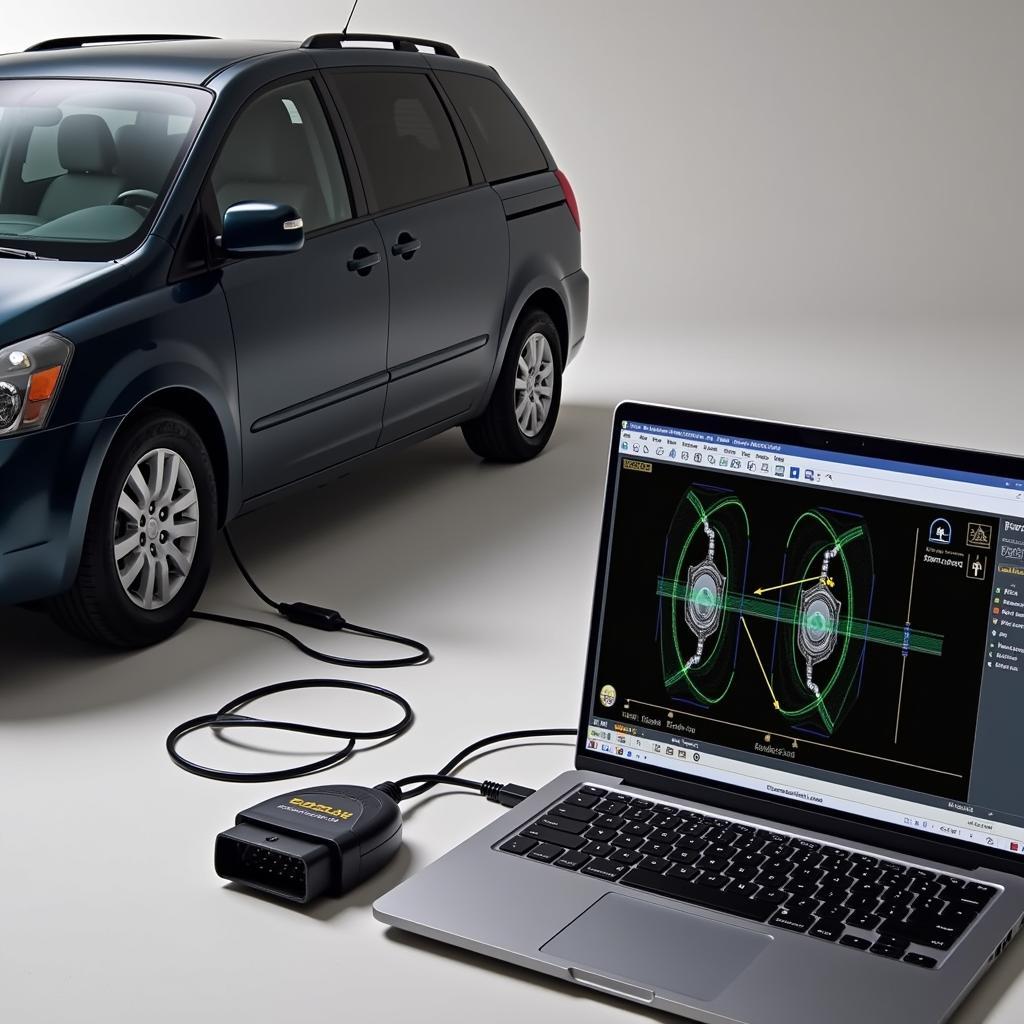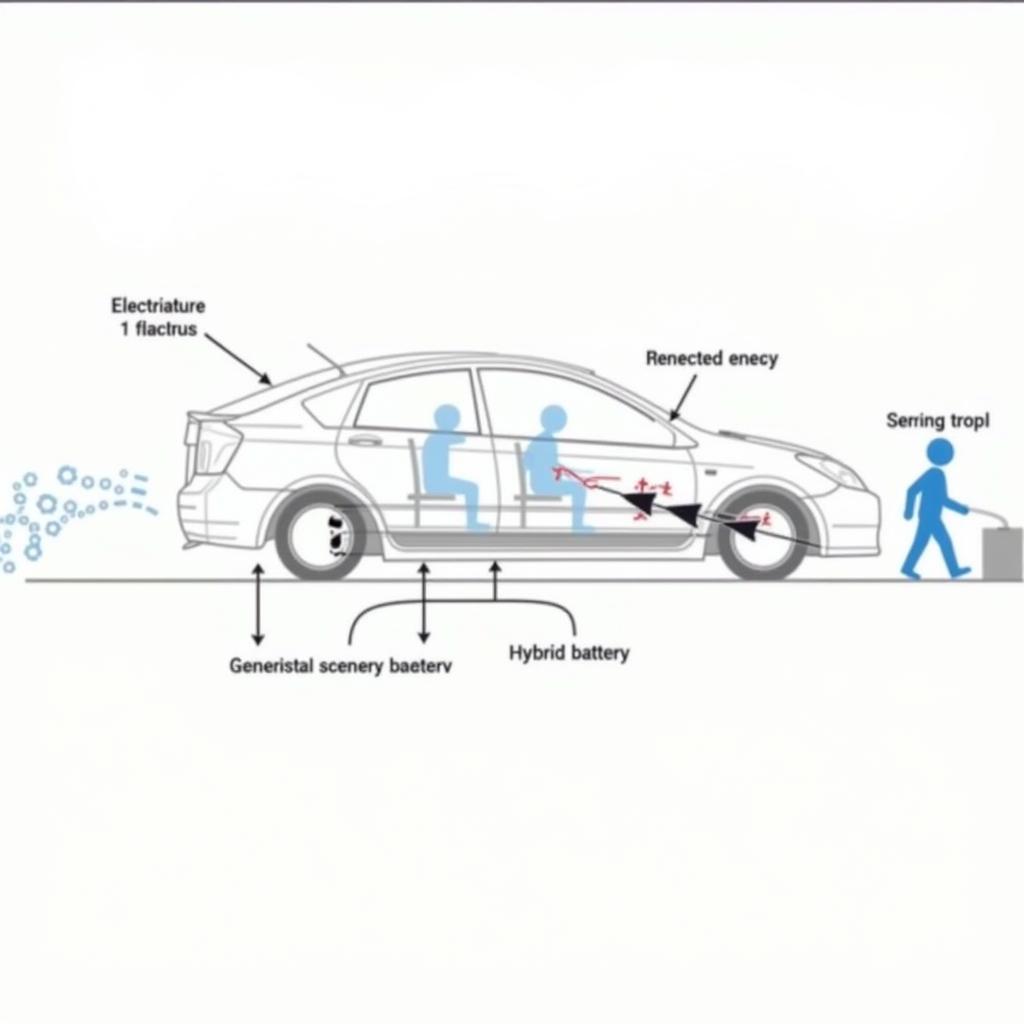The brake warning light on your dashboard is a crucial safety feature, and when it illuminates in your 2006 Nissan Quest, it’s essential not to ignore it. This article delves into the common reasons behind this warning light, ranging from simple fixes to more complex issues, and offers potential solutions to get you back on the road safely.
Understanding Your Brake Warning Light
The brake warning light serves a dual purpose. Firstly, it indicates that your parking brake is engaged. If the light is on and your van is stationary, ensure the parking brake is fully released. Secondly, it signals potential issues within your braking system, which could compromise your safety.
Common Causes of a 2006 Nissan Quest Brake Warning Light
Here’s a breakdown of the most common culprits behind a lit brake warning light in a 2006 Nissan Quest:
- Low Brake Fluid: This is the most frequent cause. Brake fluid, responsible for transmitting force to the brakes, can decrease over time.
- Worn Brake Pads: Brake pads naturally wear down with use, eventually triggering the warning light.
- Faulty Brake Light Switch: Located behind the brake pedal, this switch activates your brake lights when you depress the pedal. A malfunctioning switch can confuse the braking system.
- ABS Issues: Problems within the Anti-lock Braking System (ABS), such as a malfunctioning wheel speed sensor, can trigger the warning light.
- Master Cylinder Failure: The master cylinder plays a vital role in distributing brake fluid. A leak or internal failure necessitates immediate attention.
Troubleshooting Your Brake Warning Light
If your 2006 Nissan Quest’s brake warning light comes on, here are some troubleshooting steps:
- Check Your Parking Brake: Ensure it’s fully disengaged.
- Inspect Brake Fluid Level: If it’s low, adding more might temporarily solve the issue, but a mechanic should investigate for leaks.
- Examine Brake Pads: Worn brake pads require immediate replacement.
- Consult a Professional: For persistent warning lights or suspected ABS or master cylinder issues, seek professional diagnosis and repair.
Importance of Timely Brake System Checks
Regular maintenance plays a crucial role in preventing brake problems. Consider these tips:
- Regular Brake Fluid Checks: Inspect your brake fluid level monthly and top it off if necessary.
- Brake Pad Inspections: Have your brake pads inspected every 12,000 miles or as recommended in your owner’s manual.
- Timely Brake Fluid Flush: Replace your brake fluid every 2-3 years or as recommended by Nissan.
Remote Diagnostics and Software Solutions
In today’s automotive landscape, remote diagnostics and software solutions are becoming increasingly prevalent. By connecting your 2006 Nissan Quest to a specialized diagnostic tool, qualified technicians can remotely:
- Read Fault Codes: Identify the root cause of the brake warning light.
- Analyze System Performance: Evaluate the overall health of your braking system.
- Perform Software Updates: Address software-related glitches affecting the braking system.
 Remote Diagnostics for Brake Issues
Remote Diagnostics for Brake Issues
“Remote diagnostics allow us to efficiently pinpoint and often resolve brake issues,” says Sarah Williams, a certified automotive technician specializing in Nissan vehicles. “It’s a valuable tool for accurate diagnosis and swift solutions.”
Conclusion
A glowing brake warning light in your 2006 Nissan Quest demands immediate attention. While a simple fix like low brake fluid might be the cause, it’s crucial to investigate and address the root of the problem promptly. Regular maintenance, timely inspections, and leveraging remote diagnostics when necessary can help keep your braking system in top condition, ensuring a safe and worry-free driving experience.

